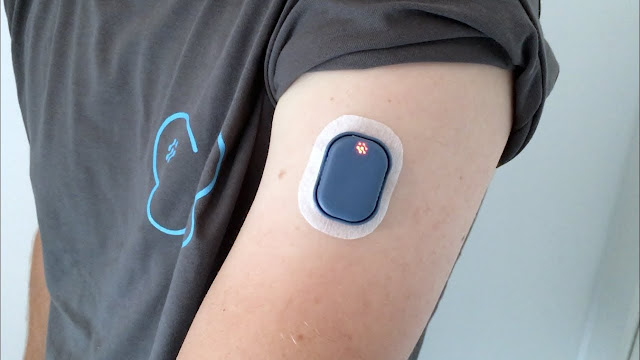Wearable Patch; A Novel Wireless Medical Device Growing Popular For Monitoring Vital Signs
 |
| Wearable Patch |
A Wearable Patch is a type of wireless medical device that attaches to the body. They are used for monitoring patients’ vital signs such as heart rate, blood pressure, temperature, glucose levels and oxygen level. They are also used for tracking a patient’s treatment and recovery.
Despite their popularity, there are
some disadvantages associated with the use of Wearable
Patch. For example, they may cause discomfort for some patients, and
they can be easily detached from the body. Moreover, they can cause infection
and damage to the skin and tissues.
Researchers have developed a new type
of sensor that attaches to the skin without irritation or pain. This sensor is
made from a gold-spun material that is flexible and ultrathin so that it moves
with the body. The sensors on the surface of the patch sense biomolecules like
cholesterol, insulin and potassium. This allows for long-term monitoring of the
levels of these substances. Recently in February 2021, researchers at the
University of California San Diego developed a stretchy, soft skin patch to
track blood pressure and heart rate while it also measures glucose levels along
with lactate, caffeine or alcohol of the wearer.
The Global
Wearable Patch Market Size Is Expected To Be Valued At US$ 318.1 Million In
2019, And Is Expected To Exhibit A CAGR Of 22.9% Over The Forecast Period
(2019-2027).
This new approach is particularly
useful for determining how much insulin is needed in order to regulate the
body’s sugar levels. It could also be used for detecting changes in the body’s
physiology that occur due to chronic diseases, such as diabetes.
Another advantage of this type of
sensor is that it can be applied to any part of the body, including the ears,
nose and throat. This makes it a versatile sensor, and it can even be used to
monitor respiratory and heart rates, which can help identify respiratory and
cardiovascular issues. These Wearable
Patch are being incorporated into different healthcare industries, such as
hospitals and clinics. They are being used for monitoring various conditions,
such as diabetes and atrial fibrillation. They are also being incorporated into
sportswear, as they can provide valuable information about a player’s
performance and recovery.



Comments
Post a Comment